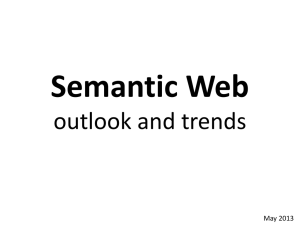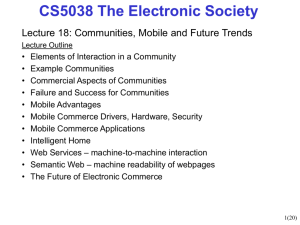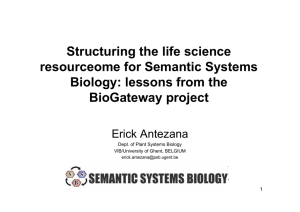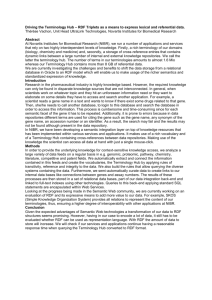The semantic web and logic
advertisement
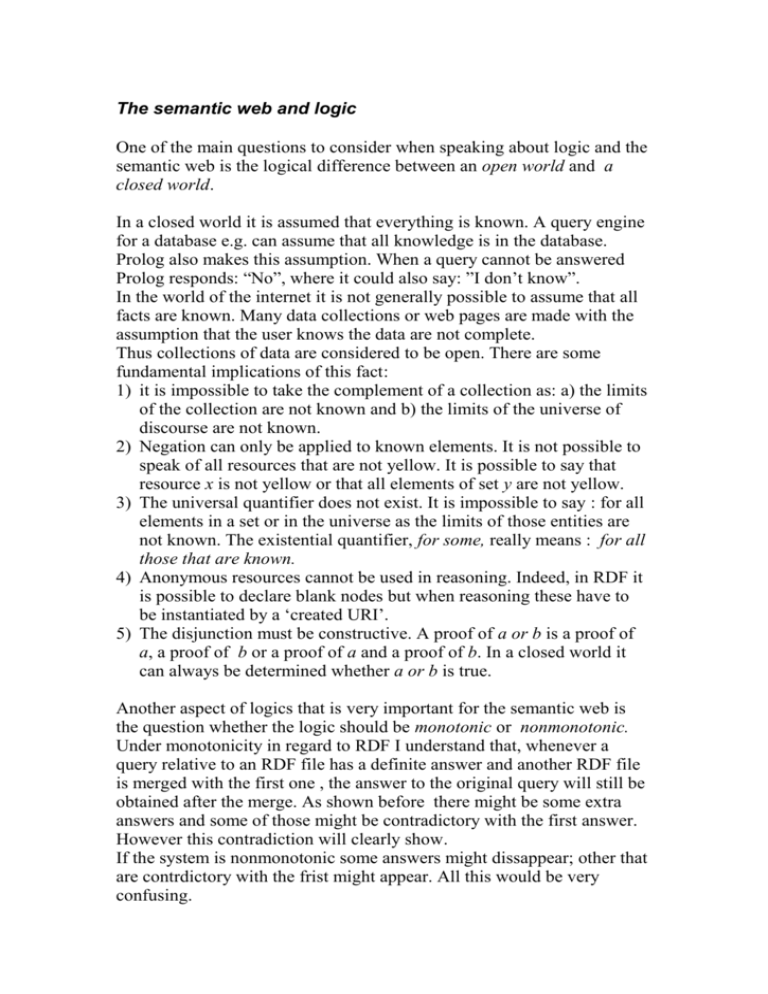
The semantic web and logic One of the main questions to consider when speaking about logic and the semantic web is the logical difference between an open world and a closed world. In a closed world it is assumed that everything is known. A query engine for a database e.g. can assume that all knowledge is in the database. Prolog also makes this assumption. When a query cannot be answered Prolog responds: “No”, where it could also say: ”I don’t know”. In the world of the internet it is not generally possible to assume that all facts are known. Many data collections or web pages are made with the assumption that the user knows the data are not complete. Thus collections of data are considered to be open. There are some fundamental implications of this fact: 1) it is impossible to take the complement of a collection as: a) the limits of the collection are not known and b) the limits of the universe of discourse are not known. 2) Negation can only be applied to known elements. It is not possible to speak of all resources that are not yellow. It is possible to say that resource x is not yellow or that all elements of set y are not yellow. 3) The universal quantifier does not exist. It is impossible to say : for all elements in a set or in the universe as the limits of those entities are not known. The existential quantifier, for some, really means : for all those that are known. 4) Anonymous resources cannot be used in reasoning. Indeed, in RDF it is possible to declare blank nodes but when reasoning these have to be instantiated by a ‘created URI’. 5) The disjunction must be constructive. A proof of a or b is a proof of a, a proof of b or a proof of a and a proof of b. In a closed world it can always be determined whether a or b is true. Another aspect of logics that is very important for the semantic web is the question whether the logic should be monotonic or nonmonotonic. Under monotonicity in regard to RDF I understand that, whenever a query relative to an RDF file has a definite answer and another RDF file is merged with the first one , the answer to the original query will still be obtained after the merge. As shown before there might be some extra answers and some of those might be contradictory with the first answer. However this contradiction will clearly show. If the system is nonmonotonic some answers might dissappear; other that are contrdictory with the frist might appear. All this would be very confusing. As was shown above the logic of RDF is compatible with these requirements. They define a kind of constructive logic. I argue that this logic must be the basic logic of the semantic web. Basic semantic web inference engines should use a logic that is both constructive, based on an open world assumption, and monotonic. If, in some applications, another logic is needed, this should be clearly indicated in the RDF datastream.


